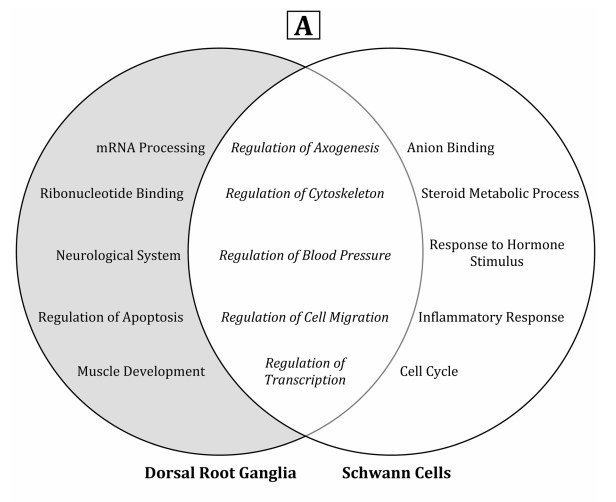Vitamin D repaired nerve in rat (50,000 IU daily dose equivalent for human)
Cholecalciferol (Vitamin D3) Improves Myelination and Recovery after Nerve Injury
PLoS-ONE
Jean-Francois Chabas, Delphine Stephan, Tanguy Marqueste, Stephane Garcia, Marie-Noelle Lavaut, Catherine Nguyen, Regis Legre, Michel Khrestchatisky, Patrick Decherchi equal contributor mail, Francois Feron equal contributor mail
Previously, we demonstrated i) that ergocalciferol (vitamin D2) increases axon diameter and potentiates nerve regeneration in a rat model of transected peripheral nerve and ii) that cholecalciferol (vitamin D3) improves breathing and hyper-reflexia in a rat model of paraplegia. However, before bringing this molecule to the clinic, it was of prime importance i) to assess which form – ergocalciferol versus cholecalciferol – and which dose were the most efficient and ii) to identify the molecular pathways activated by this pleiotropic molecule.
The rat left peroneal nerve was cut out on a length of 10 mm and autografted in an inverted position. Animals were treated with either cholecalciferol or ergocalciferol, at the dose of 100 or 500 IU/kg/day , or excipient (Vehicle), and compared to unlesioned rats (Control). Functional recovery of hindlimb was measured weekly, during 12 weeks, using the peroneal functional index. Ventilatory, motor and sensitive responses of the regenerated axons were recorded and histological analysis was performed. In parallel, to identify the genes regulated by vitamin D in dorsal root ganglia and/or Schwann cells, we performed an in vitro transcriptome study. We observed that cholecalciferol is more efficient than ergocalciferol and, when delivered at a high dose (500 IU/kg/day), cholecalciferol induces a significant locomotor and electrophysiological recovery.
We also demonstrated that cholecalciferol increases
i) the number of preserved or newly formed axons in the proximal end,
ii) the mean axon diameter in the distal end, and
iii) neurite myelination in both distal and proximal ends.
Finally, we found a modified expression of several genes involved in axogenesis and myelination, after 24 hours of vitamin supplementation .
Our study is the first to demonstrate that vitamin D acts on myelination via the activation of several myelin-associated genes.
It paves the way for future randomised controlled clinical trials for peripheral nerve or spinal cord repair .
Citation: Chabas J-F, Stephan D, Marqueste T, Garcia S, Lavaut M-N, et al. (2013) Cholecalciferol (Vitamin D3) Improves Myelination and Recovery after Nerve Injury. PLoS ONE 8(5): e65034. doi:10.1371/journal.pone.0065034
Horizontal line = control = no surgery

Venn diagram of vitamin D influence

PDF is attached at the bottom of this page
Comment by VitaminDWiki
See also VitaminDWiki
Spinal cord injury in rats was reduced if vitamin D is given soon after the injury – June 2014 later study by same authors
Spinal cord injuries may need more vitamin D than others – June 2012
Spinal Cord Injury patients normalized by 2,000 IU of vitamin D for 3 months – Sept 2011
People with spinal cord injury also very vitamin D deficient – 2010
93% of Spinal cord injury patients were low on vitamin D March 2010
Highest vitamin D increases after spine surgery associated with best outcomes – July 2012
Traumatic brain injury treated by Vitamin D Progesterone Omega-3 and glutamine – May 2013
Spinal cord problems more likely if TBI if little Omega-3 in diet – June 2013
